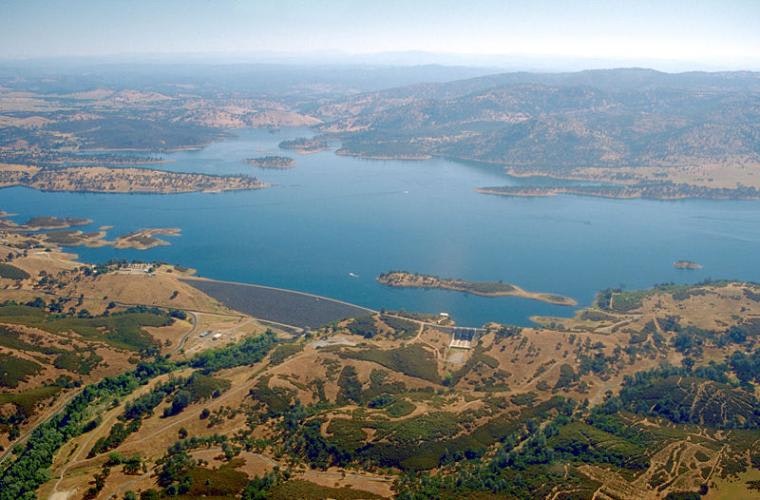New Hogan Reservoir

In constant fear of flooding since the deluge of 1907, the City of Stockton decided in the 1920s to build the first–and what is still today’s only–dam on the Calaveras River. The site chosen for the project, about two-and-a-half miles south of Valley Springs, was a settlement called Petersburg. After condemnation proceedings, on June 25, 1924, building began on a concrete dam 136 feet high and 1,325 feet long to create a basin of 115,000 acre-feet of water. Completed September 11, 1930, the dam was named for Walter Byron Hogan, who had been Stockton’s City Engineer before being appointed City Manager. In December 1955, the Calaveras flooded despite Hogan Dam and flooding returned in 1958. Work on New Hogan by the U.S. Army Corps of Engineers commenced November 10, 1960. An earth-filled dam 210 feet above the original streambed would hold back 317,000 acre-feet. This time, some of that water would also be available for municipal drinking supplies. When New Hogan Dam, completed in 1963, filled its reservoir to capacity two years later, its waters covered the earlier dam.
by Sal Manna, 2010
